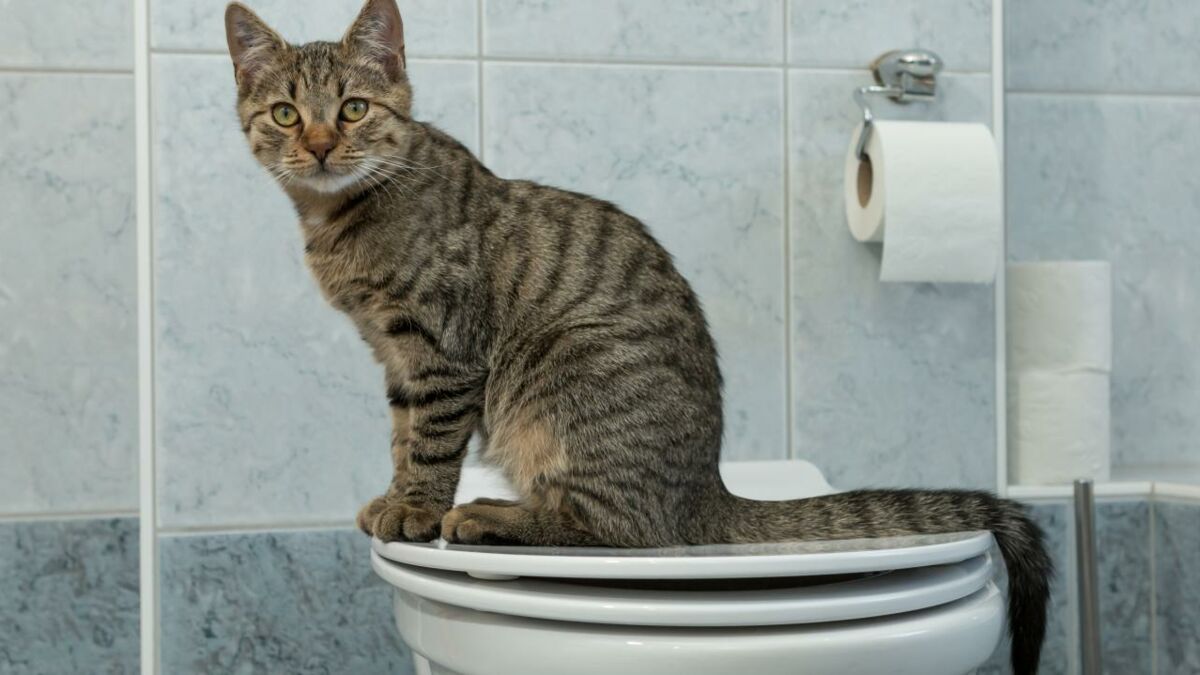Avoid Plumbing Problems: Never Flush Cat Poop Down Your Toilet - Expert Advice
Avoid Plumbing Problems: Never Flush Cat Poop Down Your Toilet - Expert Advice
Blog Article
Each person may have their own unique concepts involving Don’t flush cat feces down the toilet.

Intro
As pet cat owners, it's essential to bear in mind how we get rid of our feline pals' waste. While it may seem convenient to flush cat poop down the toilet, this practice can have detrimental consequences for both the environment and human wellness.
Alternatives to Flushing
The good news is, there are more secure and a lot more accountable ways to dispose of pet cat poop. Think about the following choices:
1. Scoop and Dispose in Trash
The most common technique of throwing away cat poop is to scoop it right into a biodegradable bag and toss it in the trash. Make sure to make use of a specialized clutter scoop and throw away the waste quickly.
2. Usage Biodegradable Litter
Go with biodegradable feline clutter made from materials such as corn or wheat. These litters are environmentally friendly and can be securely disposed of in the trash.
3. Bury in the Yard
If you have a lawn, think about hiding feline waste in a marked location far from veggie yards and water sources. Make sure to dig deep sufficient to avoid contamination of groundwater.
4. Install a Pet Waste Disposal System
Invest in a pet waste disposal system especially made for pet cat waste. These systems utilize enzymes to break down the waste, lowering smell and environmental influence.
Wellness Risks
Along with environmental issues, flushing feline waste can likewise position health and wellness dangers to people. Feline feces might consist of Toxoplasma gondii, a parasite that can cause toxoplasmosis-- a possibly severe disease, especially for expecting women and individuals with damaged immune systems.
Ecological Impact
Flushing pet cat poop presents dangerous pathogens and parasites right into the water system, posing a considerable threat to water environments. These impurities can negatively impact marine life and concession water top quality.
Conclusion
Responsible family pet possession expands past providing food and sanctuary-- it also involves proper waste administration. By refraining from flushing feline poop down the bathroom and choosing alternate disposal techniques, we can minimize our environmental footprint and protect human wellness.
Why Can’t I Flush Cat Poop?
It Spreads a Parasite
Cats are frequently infected with a parasite called toxoplasma gondii. The parasite causes an infection called toxoplasmosis. It is usually harmless to cats. The parasite only uses cat poop as a host for its eggs. Otherwise, the cat’s immune system usually keeps the infection at low enough levels to maintain its own health. But it does not stop the develop of eggs. These eggs are tiny and surprisingly tough. They may survive for a year before they begin to grow. But that’s the problem.
Our wastewater system is not designed to deal with toxoplasmosis eggs. Instead, most eggs will flush from your toilet into sewers and wastewater management plants. After the sewage is treated for many other harmful things in it, it is typically released into local rivers, lakes, or oceans. Here, the toxoplasmosis eggs can find new hosts, including starfish, crabs, otters, and many other wildlife. For many, this is a significant risk to their health. Toxoplasmosis can also end up infecting water sources that are important for agriculture, which means our deer, pigs, and sheep can get infected too.
Is There Risk to Humans?
There can be a risk to human life from flushing cat poop down the toilet. If you do so, the parasites from your cat’s poop can end up in shellfish, game animals, or livestock. If this meat is then served raw or undercooked, the people who eat it can get sick.
In fact, according to the CDC, 40 million people in the United States are infected with toxoplasma gondii. They get it from exposure to infected seafood, or from some kind of cat poop contamination, like drinking from a stream that is contaminated or touching anything that has come into contact with cat poop. That includes just cleaning a cat litter box.
Most people who get infected with these parasites will not develop any symptoms. However, for pregnant women or for those with compromised immune systems, the parasite can cause severe health problems.
How to Handle Cat Poop
The best way to handle cat poop is actually to clean the box more often. The eggs that the parasite sheds will not become active until one to five days after the cat poops. That means that if you clean daily, you’re much less likely to come into direct contact with infectious eggs.
That said, always dispose of cat poop in the garbage and not down the toilet. Wash your hands before and after you clean the litter box, and bring the bag of poop right outside to your garbage bins.
https://trenchlesssolutionsusa.com/why-cant-i-flush-cat-poop/

Do you really like more info about Can You Flush Cat Poop Down The Toilet?? Write feedback down the page. We'd be glad to know your insights about this entry. Hoping to see you back again later on. Sharing is nice. Helping others is fun. I cherish reading our article about Can You Flush Cat Poo or Litter Down the Toilet?.
Request Free Estimate Report this page